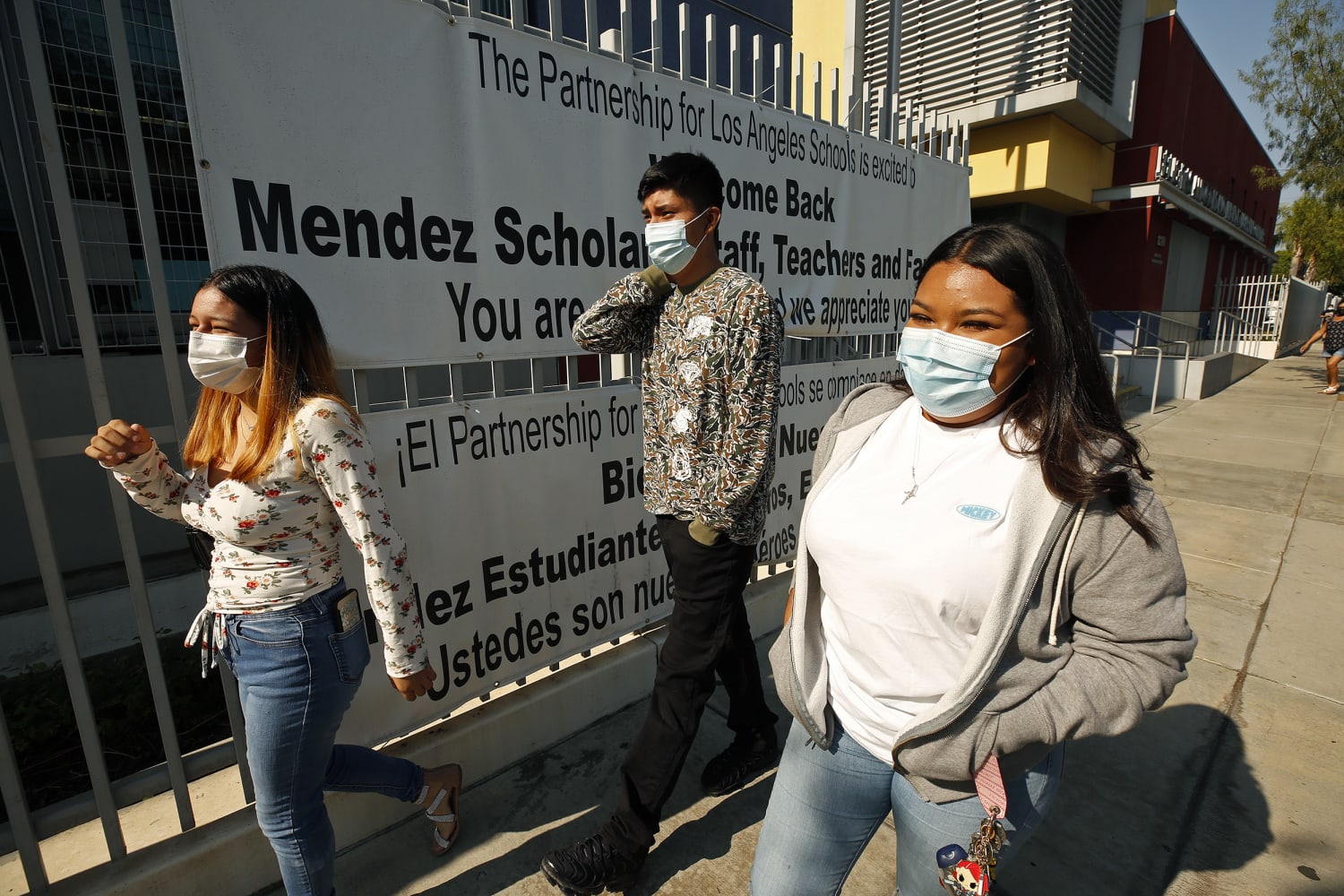
With the resumption of in-person classes in the nation’s second-largest public school district, Los Angeles school officials are juggling Covid protocols and how to stem the academic fallout brought about by the pandemic.
A recent Los Angeles Times analysis found that the percentage of A’s, B’s, and C’s earned by Latino students in the second semester of 2021 dropped by over 10 points — from 79 percent to 68 percent — compared with the fall of 2019, before the pandemic. For English language learners, the drop was steeper, over 12 points.
Latino students make up almost three-quarters (73.8 percent) of all students in the district.
Zurisday Arreola, 17, and her sister Manoli, 18, took 35-hour workweeks at McDonald’s to contribute to the family income after their dad, a carpenter, had less work amid the Covid-19 pandemic last winter. Meanwhile, Zurisday struggled to adapt to distanced and online learning.
“I would go directly to work and I would come home exhausted. But I would still obviously need to do my assignments,” said Zurisday, now a senior at Mendez High School. With an unstable internet connection, she would arrive home late from work and rush to meet midnight deadlines.
“I never had a missing assignment, but I would turn them in late because of my circumstance,” said Zurisday, who wants to study political science. She managed to earn the A’s and B’s she usually gets, but marginally passed a couple of classes with C’s.
The teen credits InnerCity Struggle, a nonprofit organization in Los Angeles, for gifting her a permanent laptop to complete her schoolwork because of limited laptop availability from the district.
The L.A. Times analysis found that the gap in grades broadened by at least 21 percent between Black and Latino students compared to their white and Asian peers.
The access to reliable internet and a computer has long persisted for communities of color, even before the pandemic. A UCLA study found that Black and Latino households are 1.3 to 1.4 times more likely to face limited access to technology, influenced by household income and educational attainment.
The school district’s record $20 billion budget includes an allocation of more than $200 million toward Primary Promise, an elementary literacy and mathematics intervention and support program. But the program is facing hundreds of teaching vacancies, especially in schools with the highest needs.
“For me, that is one of the biggest challenges,” school board member Tanya Franklin Ortiz told NBC News. “Those schools had 2.5 times the vacancies of our lowest need schools. … In the most challenging schools we have more teacher turnover, we have less people wanting to come teach there.”
The pressure to fill vacancies is taking place as reading and math assessments show that Black and Latino elementary students are struggling to meet key benchmarks, as the Times analysis showed.
A recent hiring freeze outside of the classroom was issued by the interim superintendent to allow the human resources team to focus solely on hiring classroom teachers, Ortiz stated.
“There’s a lot of academic need to catch up, where students didn’t have the same amount of time and experience they would have had with in-person learning for the last 18 months,” she said.
The schools with the highest needs are determined by a Student Equity Needs Index or SENI, developed by an alliance of several organizations that gives guidance to the school district on the distribution of funds to address the achievement gap.
As part of the district’s budget, $700 million were granted for increased SENI funding to bring more resources to students during the 2021-22 academic year.
“We owe it to the families, to the children impacted by Covid, and that includes our Latinx students, our English learners, our African American students,” said Maria Brenes, the executive director of InnerCity Struggle.
Brenes, who has been working with Latino parents and students for almost two decades, says the historic funding opportunity will allow “true equity” for the school district.
Zurisday is focusing on her final year and college applications, aspiring to attend Stanford, Occidental College or Biola University to pursue a degree in politics.
“I want to be a policymaker,” she said. “I want to be an elected official in order to make the changes in a community that should be improved.”
Follow NBC Latino on Facebook, Twitter and Instagram.
Source: | This article originally belongs to Nbcnews.com










